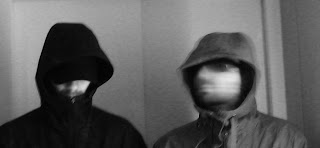
Using their time in the studio to play and experiment with imagery found in the diverse landscapes and stories of Iceland, the pair set out to collaborate on drawings in this unique laboratory setting. The residency culminated in the launch of the exhibition Jökulhlaup at Populus Tremula, a vibrant exhibition space, cabaret and publishing house representing Akureyri’s artistic underground. The exhibition was made up of twenty nine drawings executed by the pair during their stay and focuses on the relationships between individuals, landscapes and the drawings themselves. Jökulhlaup, which in Icelandic refers to glacial flooding caused by a volcano erupting beneath an icecap, speaks metaphorically of both the flood of creation that Robert and Paul embraced during their stay in Akureyri as well as the spirit of the town itself - the flood of artistic thought and vision erupting underneath the frozen industry of Akureyri to carve a new path and transform the artistic landscape.




.JPG)
.JPG)
.JPG)
.JPG)
.JPG)
.JPG)
.JPG)
.JPG)
.JPG)
.JPG)
.JPG)
.JPG)
.JPG)
.JPG)
.JPG)
.JPG)
.JPG)
.JPG)
.JPG)
.JPG)
.JPG)
.JPG)
.JPG)
.JPG)
.JPG)
.JPG)
.JPG)
.JPG)

.jpg)
.jpg)
.jpg)
.jpg)
.jpg)
.jpg)
.jpg)
.jpg)
.jpg)
.jpg)
.jpg)
.jpg)
.jpg)
.jpg)